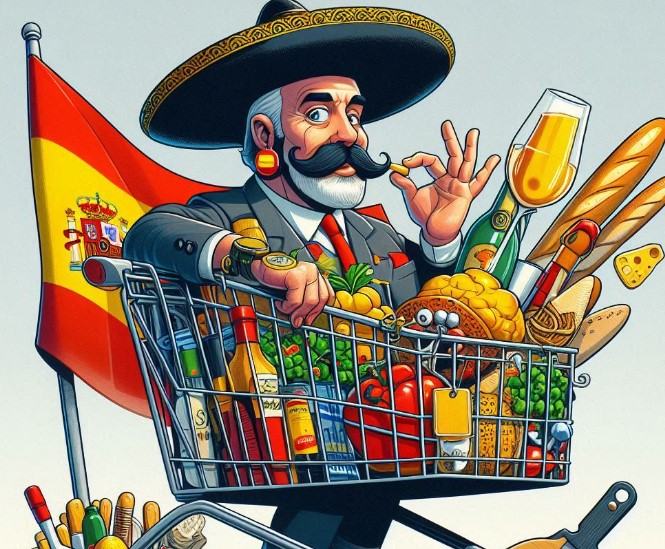Spanish households spent 83,795 million euros on food last year, corresponding to a total volume of 26,823 million kilograms or liters. This is according to the latest “Annual Report on Food Consumption in Spain 2024” published by the Ministry of Agriculture, Fisheries and Food. The report paints a detailed picture of Spanish shopping habits, showing continuity in the most purchased products such as fresh fruit, bottled water, milk and dairy products, fresh vegetables, and meat. However, there are significant shifts, including a decline in the consumption of olive oil and beverages, and an increase in meat and especially eggs.
Slight Consumption Decline with Rising Expenditures
The analysis by Luis Planas’ department shows that the volume of food consumption by households slightly decreased by 0.2%. At the same time, expenditures in 2024 increased by 2.6% compared to the previous year, with prices rising by 2.8%. A positive development is the increased environmental awareness among consumers: Compared to 2016, 206.63 million kilograms less food were wasted, representing a reduction of 15.8%.
Most Consumed Foods: Fruits, Vegetables, and Milk
Per capita, fresh fruit remains the most consumed food with 79.38 kilograms per person per year. This is followed by fresh vegetables and potatoes and liquid milk with 61.77 and 75.34 kilograms per year respectively. However, the study predicts a decline in demand compared to 2023. Among beverages, bottled water continues to dominate with 63.30 liters per person per year, which means a 2.2% decrease in consumption.
The Rise of Eggs: An Affordable Protein Source
Eggs are the big surprise in the Spanish shopping basket. Their purchases increased by 2.9%, attributable to the stability of their average price and their positioning as a high-quality protein source at a comparatively low cost. This is particularly relevant in the current economic and nutritional context, which experts at the Ministry of Agriculture describe as a “context of economic and nutritional optimization.” It should be noted, however, that the analysis does not account for the severe egg price crisis of last spring, caused by bird flu in Eastern Europe and especially the United States.
Meat and Legumes on the Rise
The consumption of meat products in the shopping basket also increased by 2.4%, with fresh meat (+2.9%), frozen meat (+1.2%), and processed meat (+1.1%) all contributing. The moderate price increase of only 1.3% helped this trend and was below the food market average of 2.8%. Similarly, sales of pasta (+4.3%) and legumes (+2.8%) increased. Fresh vegetables and fruit, however, remained stable with minor increases of 0.6% and 0.4% respectively. Dairy products and milk saw a slight decrease of 0.3%.
Olive Oil and Beverages in Decline
A significant decline was observed in olive oil, whose consumption volume decreased by 2%, although its value increased by 16.4%. In particular, purchases of olive oil (-11.4%) and extra virgin olive oil (-5.1%) decreased. Virgin olive oil, however, saw a slight increase of 1.8%. This development is linked to the price increase for all oils in 2024, triggered by the end of the VAT reduction, even though olive oil remains highly discounted. As an alternative, sunflower oil gained importance, with its consumption increasing by 7.4% in 2024, while its price fell by 16.1%. Pomace olive oil remains a niche product with a 3% share.
Beverage consumption also decreased. The largest declines were seen in mixed drinks and derivatives, as well as juices and nectars, with consumption decreasing by 14.1% and 9.6% respectively. In line with the trend towards low-alcohol or de-alcoholized wines, purchases of wine beverages (-5.8%) and wines with minor fluctuations also decreased by 2.4%.




